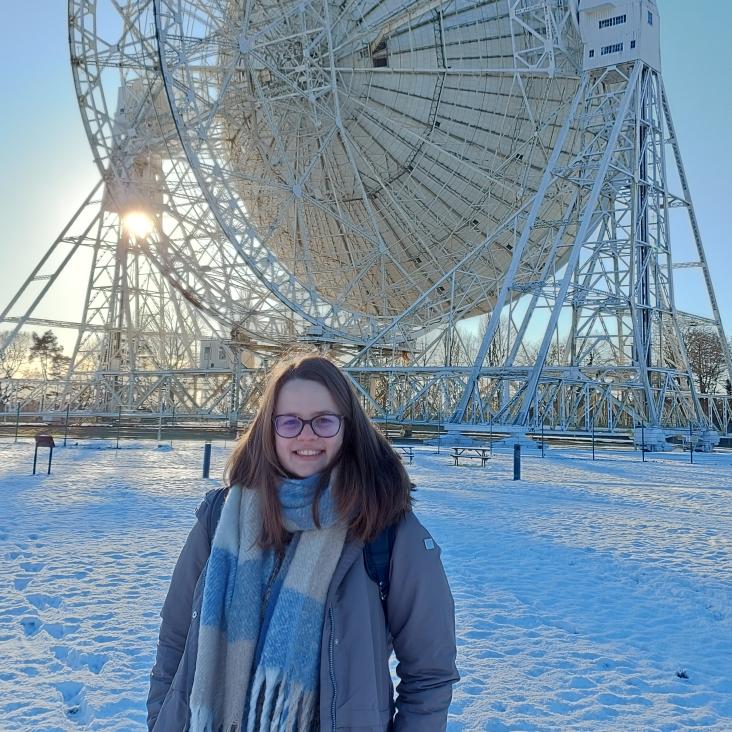MIGHTEE: A first look at MIGHTEE quasars
Monthly Notices of the Royal Astronomical Society Oxford University Press (OUP) (2025) staf1187
Abstract:
Abstract In this work we study a robust, Ks-band complete, spectroscopically-confirmed sample of 104 unobscured (Type-1) quasars within the COSMOS and XMM-LSS fields of the MeerKAT International GHz Tiered Extragalactic Exploration (MIGHTEE) Survey, at 0.60 < zspec < 3.41. The quasars are selected via gJKs colour-space and, with 1.3-GHz flux-densities reaching rms ≈ 3.0 μ Jy beam−1, we find a radio-loudness fraction of 5percnt. Thanks to the deep, multiwavelength datasets that are available over these fields, the properties of radio-loud and radio-quiet quasars can be studied in a statistically-robust way, with the emphasis of this work being on the active-galactic-nuclei (AGN)-related and star-formation-related contributions to the total radio emission. We employ multiple star-formation-rate estimates for the analysis so that our results can be compared more-easily with others in the literature, and find that the fraction of sources that have their radio emission dominated by the AGN crucially depends on the SFR estimate that is derived from the radio luminosity. When redshift dependence is not taken into account, a larger fraction of sources is classed as having their radio emission dominated by the AGN. When redshift dependence is considered, a larger fraction of our sample is tentatively classed as ‘starbursts’. We also find that the fraction of (possible) starbursts increases with redshift, and provide multiple suggestions for this trend.The JWST Emission-Line Survey: extending rest-optical narrow-band emission-line selection into the Epoch of Reionization
Monthly Notices of the Royal Astronomical Society Oxford University Press 541:2 (2025) 1329-1347
Abstract:
We present the JWST Emission-Line Survey (JELS), a JWST imaging programme exploiting the wavelength coverage and sensitivity of the Near-Infrared Camera (NIRCam) to extend narrow-band rest-optical emission-line selection into the Epoch of Reionization (EoR) for the first time, and to enable unique studies of the resolved ionized gas morphology in individual galaxies across cosmic history. The primary JELS observations comprise m narrow-band imaging over arcmin designed to enable selection of H emitters at and a host of novel emission-line samples, including [O iii] () and Paschen (). For the F466N/F470N narrow-band observations, the emission-line sensitivities achieved are up to more sensitive than current slitless spectroscopy surveys (5 limits of 0.8–1.2), corresponding to unobscured H star formation rates (SFRs) of 0.9–1.3 at , extending emission-line selections in the EoR to fainter populations. Simultaneously, JELS also adds F200W broad-band and F212N narrow-band imaging (H at ) that probes SFRs fainter than previous ground-based narrow-band studies (), offering an unprecedented resolved view of star formation at cosmic noon. We present the detailed JELS design, key data processing steps specific to the survey observations, and demonstrate the exceptional data quality and imaging sensitivity achieved. We then summarize the key scientific goals of JELS, demonstrate the precision and accuracy of the expected redshift and measured emission-line recovery through detailed simulations, and present examples of spectroscopically confirmed H and [O iii] emitters discovered by JELS that illustrate the novel parameter space probed.The JWST Emission Line Survey (JELS): an untargeted search for H α emission line galaxies at z > 6 and their physical properties
Monthly Notices of the Royal Astronomical Society Oxford University Press 541:2 (2025) 1348-1376
Abstract:
We present the first results of the JWST Emission Line Survey (JELS). Utilizing the first NIRCam narrow-band imaging at 4.7 m, over 63 arcmin in the PRIMER/COSMOS field, we have identified 609 emission line galaxy candidates. From these, we robustly selected 35 H star-forming galaxies at , with H star-formation rates () of . Combining our unique H sample with the exquisite panchromatic data in the field, we explored their physical properties and star-formation histories, and compared these to a broad-band selected sample at which has offered vital new insights into the nature of high-redshift galaxies. UV-continuum slopes () were considerably redder for our H sample () compared to the broad-band sample (). This was not due to dust attenuation as our H sample was relatively dust-poor (median ); instead, we argue that the reddened slopes could be due to nebular continuum. We compared and the UV-continuum-derived to SED-fitted measurements averaged over canonical time-scales of 10 and 100 Myr ( and ). We found an increase in recent SFR for our sample of H emitters, particularly at lower stellar masses (). We also found that strongly traces SFR averaged over 10 Myr time-scales, whereas the UV-continuum overpredicts SFR on 100 Myr time-scales at low stellar masses. These results point to our H sample undergoing ‘bursty’ star formation. Our F356W sample showed a larger scatter in across all stellar masses, which has highlighted how narrow-band photometric selections of H emitters are key to quantifying the burstiness of star-formation activity.MIGHTEE-HI: The direct detection of neutral hydrogen in galaxies at $z>0.25$
(2025)
Cosmology from LOFAR Two-metre Sky Survey Data Release 2: Counts-in-cells statistics
Astronomy & Astrophysics EDP Sciences 698 (2025) a148


